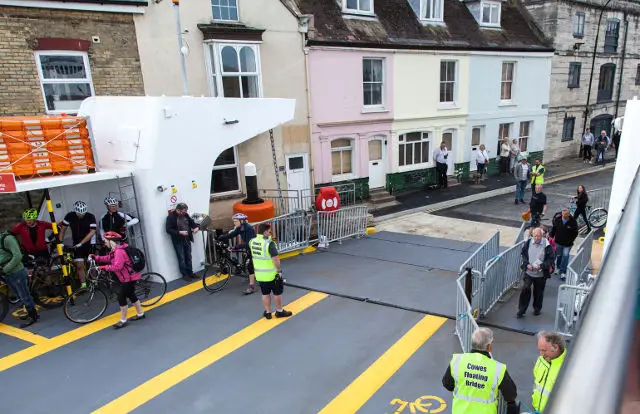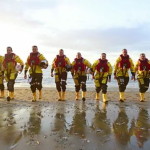Residents living directly next to the floating bridge terminal on the Cowes side of the River Medina have, for many months, been unhappy about the levels of noise they’ve had to endure.
It started with the construction of the new slipways, which resulted not only in high levels of noise (many times at unsociable hours) as the concrete slipways were demolished, but also shaking of their homes.
They’d all hoped the completion of the slipway construction and the introduction of the new floating bridge would have meant a return to normality.
Increased noise levels
Sadly this was not to be and what has followed since the new floating bridge came into service has been a dramatic increase in the level of noise due to the impact of the prows hitting the slipway, the claxon, vehicles loading and unloading and the metal gates ‘crashing’ open.
It’s particularly noticeable late at night and early in the morning, when there is very little other noise and having a significant on the ability of residents and their families to sleep.
It would be an understatement to say the noise levels are having a seriously detrimental effect on the lives of these residents.
Inspected by Environmental Health
At the request of residents, officers from the Isle of Wight council’s Environmental Health department have recently made several site visits to the properties to observe and measure the noise levels.
The levels were assessed against documented World Health Organisation (WHO) standards which read:
‘……For a good sleep, it is believed that indoor sound pressure levels should not exceed approximately 45dBLAmax more than 10-15 times per night (Vallet & Vernet 1991), and most studies show an increase in the percentage of awakenings at SEL values of 55-60dBA………’
‘…..If negative effects on sleep are to be avoided the equivalent sound pressure level should not exceed 30dBA indoors for continuous noise. If the noise is not continuous, sleep disturbance correlates best with LAmax and effects have been observed at 45dB or less. This is particularly true if the background level is low. Noise events exceeding 45dBA should therefore be limited if possible….’
Complaints of noise “appear justified”
OnTheWight has seen the report and the conclusion by the officer was clear – he said “Impact noises from the FB operations are significant within residential properties, well above WHO guidelines” and that “complaints of noise from the FB appear justified”.
When recorded from inside one of the cottages with the windows closed, the Floating Bridge claxon recorded a whopping 79.0dB(A)LMAX, compared to that which the WHO say is acceptable (45dB).
Dbs are logarithmic therefore 79dB is not just nearly twice as loud, but considerably more.
Other recorded levels
Some of the other noise levels recorded found:
- The noise levels recorded outside the properties when the prow of the floating bridge was lowered were 93.1dB(A)LMAX.
- The noise of the prow impacting the slipway from the bedroom window – slightly open – was an incredible 78.4dB(A)LMAX.
- The noise levels of cars loading and unloading from the bedroom window was 73.6dB(A)LMAX.
- Gate noise was measured at 30dB above the WHO guideline level.
Impact noise likely to prevent and/or disturb sleep
The officer’s report went on to say,
“Subjectively, the impact noise was loud and intrusive within the property and would be likely to cause disturbance depending on the time of day/night.”
Adding,
“The impact noise at night-time is likely to prevent and/or disturb sleep.”
No apology
When the senior officer dealing with the floating bridge complaints emailed residents with the report at the end of last week, the email offered no apology, but points out a recommendation from the Noise Investigation report, saying the Council should over the next six weeks, “look to mitigate the noise issues where possible”.
Residents told OnTheWight they told us this was a move to buy time.
The report (which OnTheWight has seen) in fact precedes that by saying,
“Environmental Health advise that all matters should be addressed as promptly as possible and within a reasonable timeframe.”
What happens next?
The report concludes that,
“The Council is unable to take enforcement action against itself so no formal determination of ‘statutory nuisance’ can be made.”
Image: © With kind permission of Allan Marsh





